

Posted by Wayne Parham [ 66.137.59.19 ] on April 12, 2004 at 02:01:43:
In Reply to: Midrange Horn posted by Wayne Parham on April 12, 2004 at 02:00:52:
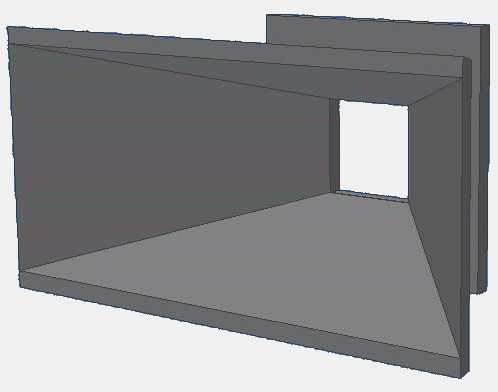
It's been a long time coming, but now I've got a pretty good design nailed down. It is inexpensive and extremely simple to build. And we will be offering them complete or in flat-pack kit form which makes them even easier to build.
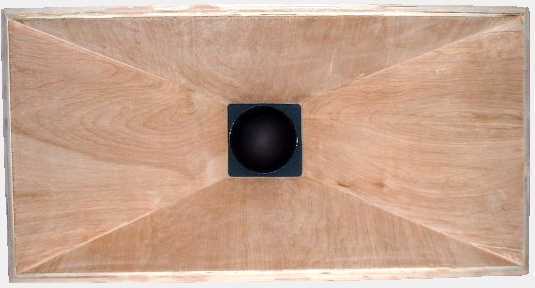
The horn covers the 200Hz to 2kHz band and has 105dB/W/M sensitivity. Maximum power is 300 WRMS, so maximum SPL is over 125dB. Actual response depends on placement, but it is intended primarily as a midrange horn subsystem for three-way (and four-way) π cornerhorns, so corner placement is normal. In this application, the horn is smooth down to below 200Hz, almost to 150Hz.
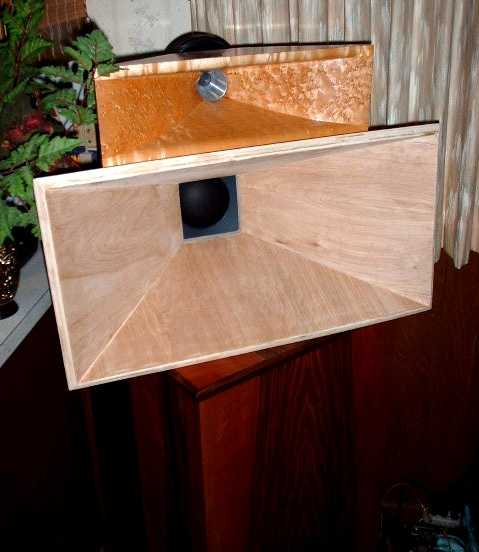
Response is good to 2kHz, and then drops about 5dB and remains at this reduced shelf for almost an octave, to 3.5kHz. This is due largely to breakup modes in the driver. Both the Eminence Delta 10 and the JBL 2012 have rising response that peaks in the region above 2kHz. What occurs here is that the cone begins to flex making ripples in the surface of the cone. These cone surface movements are decoupled from the heavier moving assemblies so it's like having another much lighter cone driving the horn. This makes a second area of response that increases output from the horn above 1kHz.
In some applications, this output can be used making the horn capable of output to 3500Hz. Other applications will want to rolloff the region above 2kHz, and I've found that this can be done with a simple 1mH series coil. This is the same "Pseudo Butterworth" arrangement I've used in the past, and the addition of a 1mH coil does very little to affect horn response below 2kHz. It just shaves the peak between 2kHz and 4kHz, attenuating that region and preventing it from increasing horn output in this range.
Here are the plans:
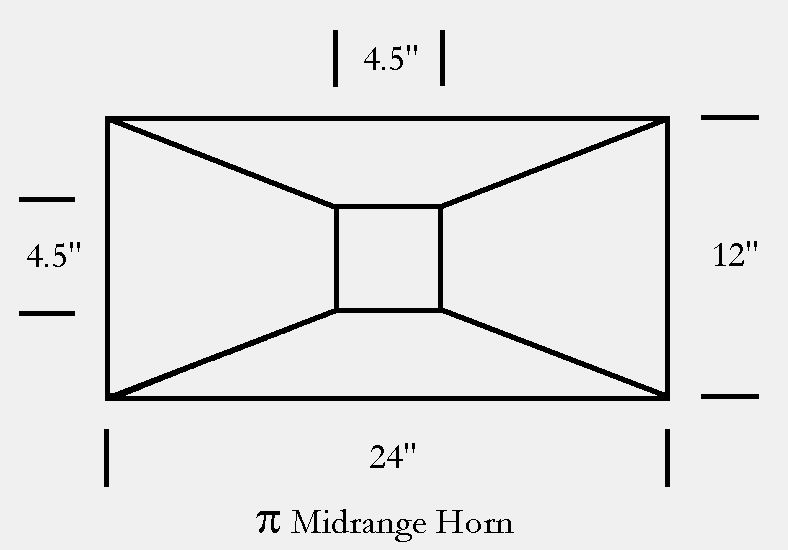
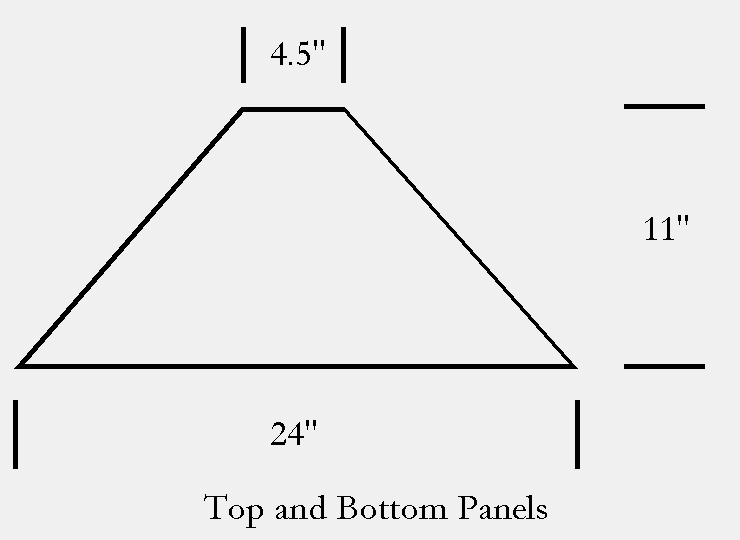
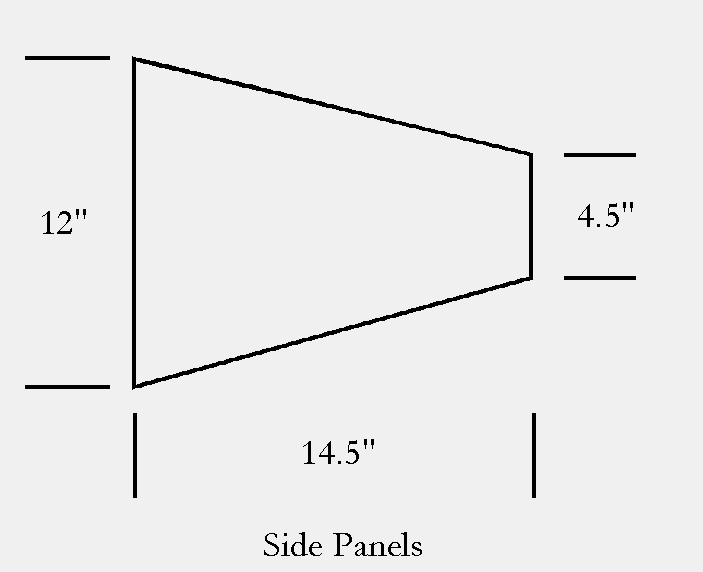
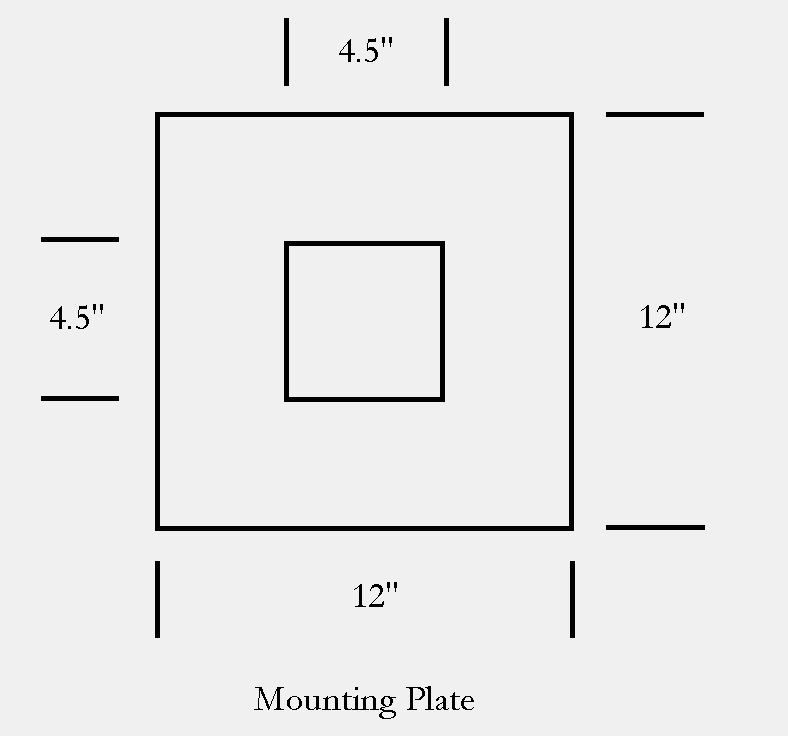
As you can see, it's an exceedingly simple design. When I built the first prototype, I included a second conical section at the edge for pattern control. But the more I thought about it, the more I realized that it was not necessary in this application. For one thing, it increased the size of the horn and yet not enough to really be effective. And for another thing, since the horn is typically used indoors, in eighth-space or at least quarter-space conditions, the mouth is generally completed by the room itself. So the extension added size and complexity but didn't do much of anything else.
The horn was designed to use an "open" rear chamber, but the condition that should be met is that the rear chamber should be greater than 0.35ft3 or 10 liters, which is pretty hard not to do. I would prefer the rear chamber be sealed because I don't want the back wave to contribute. This is particularly important in a cornerhorn, because the rear wave would be presented to the corner apex, which is a pretty good horn, all by itself. The contribution from an open back in a cornerhorn would be significant and counterproductive. So seal the back, but make it larger than 0.35ft3.
[ PiSpeakers Forum ] [ Help ]